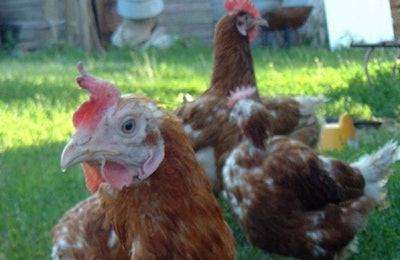
Based on official reports from the national animal health agencies to the World Organisation for Animal Health (OIE), highly pathogenic avian influenza (HPAI) appears to be on the wane in Asia and Africa.
Over the past week, OIE has received reports of one new case of the disease in poultry each in Vietnam and Iran, and the impact of previous extensive outbreaks are still being felt in South Korea.
Recent HPAI outbreaks in Iran, Vietnam
After an absence of more than one-and-a-half years, the H5N1 virus variant of HPAI has returned to the poultry sector in Iran. The veterinary authority informed OIE in the last week about an outbreak in flock of 230 ducks in Mazandaran province in January. Detected as a result of passive surveillance, 10 of the birds died and the rest of the flock was destroyed. Active surveillance of poultry farms is now reported to be on-going. Source of the infection is unknown but the outbreak was in a district on the Caspian Sea, where contact with infected wild birds would be a possibility.
There has been one new outbreak of HPAI, also caused by the H5N1 virus, in Vietnam, bringing the country’s total outbreaks since mid-February to 17. Latest to be affected was a “backyard” flock of 2,500 birds in Can Tho province in the south of the country. According to the report to the OIE, 75 of the birds died and the rest have been destroyed.
HPAI risk lowered in Japan, Hong Kong, Kuwait
On April 18, restrictions were lifted in the last two areas of Japan following previous outbreaks of H5N6 HPAI, according to the agriculture ministry’s latest report to the OIE. The controls were imposed after the latest of the country’s 12 outbreaks – in the prefectures of Miyagi and Chiba. Stamping out has been completed, and no new cases have been detected for a period of 21 days.
In the last week, Japan’s agriculture ministry informed OIE that a total of 210 wild birds – including 53 mute swans and 33 whooper swans – found dead at various locations throughout the country had tested positive for the H5N6 HPAI virus between November 18 last year and March 8.
The same virus was detected in a fecal sample from a wild bird at a nature reserve in Hong Kong in November 2016. Following extensive monitoring, only three virus-positive samples were found, and the region’s government has reported to the OIE that the situation is now “resolved.”
The Public Authority for Agriculture in Kuwait has also informed the OIE that HPAI has been resolved. There have been no further outbreaks since December of last year, when the H5N8 HPAI virus was detected in a backyard poultry flock.
In their regular weekly updates to the OIE, the veterinary authorities of the African states, Cameroon and Nigeria, report no new HPAI outbreaks in poultry.
South Korea relaxes avian flu alert level
While the authorities have downgraded the HPAI risk in the country after a two-week period with no new cases in poultry, South Korea is having to cope with the after-effects of its worst-ever disease crisis to affect the sector, reports Reuters.
With more than 20 percent of the country’s poultry lost to the disease and the industry requiring many months to return to full production, eggs are being imported to meet local demand. Retail prices are much higher than in November, when the first outbreak was confirmed.

















